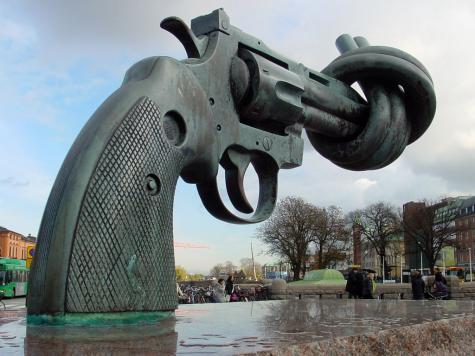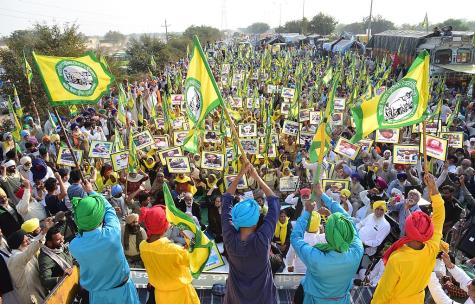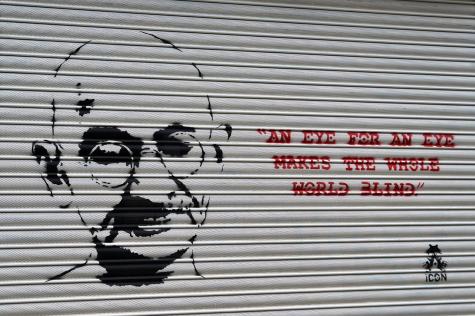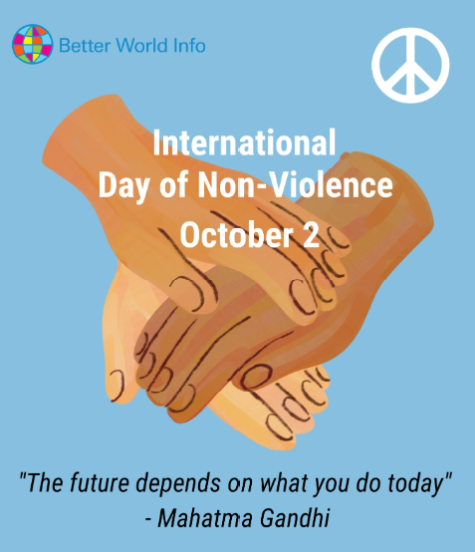NONVIOLENCE

The Power of ➡️ NONVIOLENCE – Shaping Conflict Resolution and Peace
The theme of nonviolence is more relevant than ever as we witness the continuing suffering, death, and destruction in the Israel war on Gaza and the Russian war in Ukraine. Nonviolence is not avoiding or ignoring conflict, but rather finding ways to wage conflict without causing harm to others.
Better World Info’s ➡️ platform for nonviolence boasts over 600 resources to essential information on pacifism, nonviolence organisations such as Pace e Bene, news portals, books, training, and examples of successful nonviolent action including the U.S. civil rights movement, the Palestine solidarity movement and BDS campaign, the Montgomery Bus Boycott, and the women's suffrage movement.
Non-violence is the greatest force at the disposal of mankind. It is mightier than the mightiest weapon of destruction devised by the ingenuity of man” - Mahatma Gandhi
Visit also our comprehensive guide on ➡️ Nonviolent Action - Positive Examples. And make sure to check out our related guides on peace, conflict resolution, and exemplary people in the peace movement.
German speakers should visit our partner site Bessere Welt Info for 450 links on Gewaltfreiheit.

Forms of Nonviolent Resistance
Nonviolence as a resolution to important issues has been used successfully to create and secure peace for generations. It takes many forms and is growing in popularity as a way for citizens to use their collective voice for change. Peaceful civil unrest is a growing trend. The number of mass protests globally has increased by 12% on average per year since 2009. 2019 saw protests on every continent, across 114 countries.
Civil disobedience is another way to make a stand without inciting violence. In the famous example of Rosa Parks refusing to give up her seat on the bus to a white man, she broke a law that she deemed unjust, and eventually led to important reforms and greater equality for African-Americans.
An alternative form of protest is to boycott. This involves abstaining from using or buying certain goods or services to show your disapproval of a business, government, action, or law. Examples of famous boycotts include the fur trade, labour exploitation in the chocolate industry, environmental destruction caused by palm oil monocultures, and of course the BDS campaign against Israel.
Nonviolent conflict resolution and dialogue which promote empathy and understanding are other crucial aspects which can backup nonviolent actions. These various methods have been used successfully both independently and in combination, always centred around social progress and avoiding harm to others.
Other forms of nonviolent protest include squatting, roadblocks, sit-ins, tree sitting, strikes, street art, picketing, petitions, and public assemblies. Even music, documentaries, poems, and concerts have been used to demand change.

Is Nonviolence Effective?
Proven as a potent weapon over the years, research has concluded that nonviolence is far more successful in effecting change than violence. People are much more likely to engage in civil resistance campaigns than to pick up a weapon. They attract a large, diverse group of people, which is key to pushing forward reforms and positive change.
The movement needs to capture the attention of the media, the political and economic elites, and any other players who are acting as barriers. Success rates increase massively when a number of different methods are used, and that all forms of chaos and violence are avoided. It is of paramount importance that those involved are not putting themselves in danger.
For campaigns to be effective only a surprisingly small proportion of the population need to get behind a campaign – just 3.5% is enough to make a difference. Even if nonviolent campaigns fail in the short term, they serve to empower reformers and progressives in positions of power who can begin to make small changes from within.
This was the case with the Kefaya movement Egypt in the early 2000s, which eventually paved the way to 2011 Egyptian uprising. Other examples of slow reform include the end of South African apartheid, the Indian independence movement led by Gandhi, the Occupy Movement which fights against economic inequality and corruption, and the Arab Spring, which to this day fights against dictatorships and authoritarianism.
“Countries in which there were nonviolent campaigns were about 10 times likelier to transition to democracies within a five-year period compared to countries in which there were violent campaigns — whether the campaigns succeeded or failed” - Erica Chenoweth
It is proven that nonviolent revolutions lead to more sustainable and consistent change. For more insight into the effectiveness of non-violence see our section on peace research.

Nonviolence for a Peaceful and Better World
To prevent violence, we must understand why violence occurs in the first place. What are the conditions which create violence, and how can we reverse this narrative. Victims of violence are also much more likely to later go on to be a perpetrator themselves, and therefore tackling the root causes of conflict is essential.
The spread of nonviolent action is now global. People are learning how to become organised, how to campaign online, and how to use social media to spark nonviolence forms of resistance. Excellent examples include the Black Lives Matter protests, the Roe v. Wade women’s rights demonstrations, antiwar in Ukraine protests, and those calling for climate change action.
The growing support for these types of mass gatherings and the need for change has been met by hostility by politicians and leaders, even our right to protest is now under threat. The UK Public Order Bill for example has given police additional authority which restricts peoples fundamental right to peaceful protest.
We must embrace the power of goodness, kindness, tolerance, and dialogue. We all have the power to speak out against repression, censorship, rights violations, environmental destruction, militarisation, endless wars, and suffering. No action is too small to make a difference.
“Never be afraid to raise your voice for honesty and truth and compassion against injustice and lying and greed. If people all over the world...would do this, it would change the earth” - William Faulkner
Author: Rachael Mellor, 30.01.24 licensed under CC BY-ND 4.0
For further reading on Nonviolence see below ⬇️
Info on NONVIOLENCE
- Pacifism[35]
- General Info[63]
- Nonviolence News[57]
- Magazines & Journals[14]
- Nonviolence Organizations by country[198]
- Nonviolence Training[24]
- Exemplary People on Peace[4]
- Famous Pacifists - Peacemakers[15]
- Books ...[63]
- Films[7]
- Direct Action and Civil Disobedience[25]
- Social Defence[5]
- Culture of Peace[20]
- Sarvodaya Movement (Gandhi)[32]
- Bhoodan Movement (Vinoba)[31]
- Ahimsa (nonviolence)[17]
- Satyagraha (power of goodness, more than ahimsa)[12]
- Charter for a World Without Violence[6]
- People's Charter to Create a Nonviolent World[6]
- Movement Action Plan : Campaigns & Social Movements[2]
- Mutual Understanding & Multicultural Society[2]
- Disobedience Day - July 3[8]
- Power of Goodness[13]
- Pace e Bene[27]
- Nonviolent Communication[11]
- Selected Articles[25]